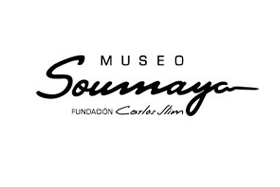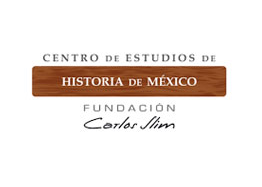The Carlos Slim Foundation presents: Michelangelo Buonarroti’s Pieta and David
The Carlos Slim Foundation presents the marble versions of the most famous Renaissance sculptures: Pieta and David by Michelangelo Buonarroti. For the first time, the lobby of the Soumaya Museum in Plaza Carso brings these two works of art together under the same roof.
The sculptures were made with the authorizations given by the Vatican Museums and Italian Government to the Ferdinando Marinelli Artistic Foundry. They were sculpted in Florence in 1:1 scale by the Pietro Bazzanti Art Gallery, under the supervision of the sculptor Roberto Domina.
The single piece of veinless marble comes from the same Carrara quarry in the Toscana region of Italy from which Michelangelo got the material for his Renaissance works. The sculptures in the Soumaya Museum were chiseled by a group of highly-skilled Italian sculptors.
Pieta
[based on the marble by Michelangelo Buonarroti sculpted between 1498 and 1499, found in the Holy See, Vatican City].
In 1932, the Holy See commissioned the Ferdinando Marinelli foundry to produce the bronze balustrade of the emblematic double helix staircase of the Vatican Museums. Given the high quality of its work, in 1939 it was commissioned to make the tomb of Pope Pius X. This collaboration would continue with other projects that allowed Marinelli to replicate works such as Michelangelo’s Pieta.
The 1:1 scale version exhibited today in the lobby of the Soumaya Museum weighs 2,600 kilograms (5732 pounds) and was made using the traditional manual pantograph method, an instrument that, by taking points from a shape, allows it to be exactly duplicated.
Emblem of the San Peter’s Basilica, the Pieta was destined for the chapel of Saint Petronila as a funeral sculpture. It was commissioned from the maestro by the French Cardenal Jean de Bilheres Lagraulas. In this work of art, Michelangelo was able to express restraint and peace in the face of the Virgin when, following the Descent from the Cross, she cradled the body of Her Son. Christ naturally rests in Mary’s lap; both merging in a spiritual intimacy.
David
[based on the marble by Michelangelo Buonarroti sculpted between 1501 and 1504, found in the Accademia Gallery in Florence, Italy]
In 1929, the Italian Government commissioned a version of Michelangelo’s David from the Marinelli Foundry as a gift for Uruguay. A plaster mold was taken from the marble in the Florence Accademia for the bronze casting. The same plaster, which could be handled and separated without harming the original, was used in 2018 by the Pietro Bazzanti Art Gallery to obtain, using a manual pantograph, measurements that were so precise that they allowed an exact replica to be made, this time in marble.
Realized with the authorization of the Italian Government, the 1:1 scale version in the Soumaya Museum weighs 5,572 kilograms (12,284 pounds) and measures 5.17 meters (17 feet) high. The marble base of the Florence Accademia sculpture was also replicated, giving the whole sculpture a total height of 6.97 meters (23 feet).
Initially, the David was commissioned as part of a project of 12 sculptures inspired by the Old Testament for the buttresses of the Cathedral of Saint Mary of the Flower (Florence Cathedral). In the mid-15th Century, the block of marble was worked by the sculptors Agostino di Duccio and Antonio Rossellino, who, given the fragility of the material and for fear of breaking it, abandoned the commission. In 1501, a committee formed by outstanding artists officially requested the work from Michelangelo. Due to the condition of the marble, which had already been worn down, the maestro made a new design adapted to the dimensions of the block.
In isolation and taking great care to not crack the stone any further, the artist began to sculpt the David in September 1501 and completed it in May 1504. The work was based on a careful anatomical study that allowed the biblical hero to be shown with powerful and at the same time harmonious forms.
The sculpture was presented on September 8, 1504 in the Piazza della Signoria in front of the Palazzo Vecchio; it was so imposing that it soon became a symbol of the momentum and sovereignty of the city of Florence. The David was placed facing Rome. This decision created controversy due to the fact that his view was directed towards the Vatican, given that Pope Alexander VI had given the Medici political asylum after they fled Florence. On the other hand, the David in the Soumaya Museum looks towards the Pacific Ocean that united the world.
The commitment of the Carlos Slim Foundation has been to share art that can’t usually be found in Mexico. Consequently, these works allow visitors, families, young artists and students to value the aesthetics of sculptures that have marked the history of universal art.
So that the whole public can enjoy the Pieta and the David, the opening times of the Soumaya Museum in Plaza Carso is extended from 10 a.m. to 7 p.m.









